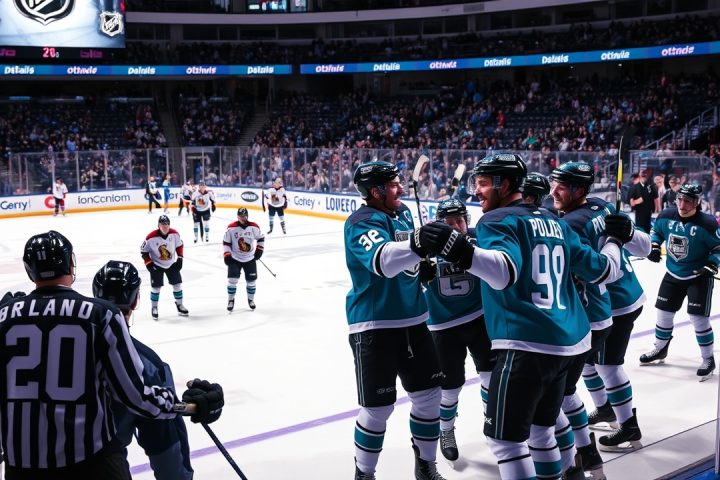The Dynamics of Fan Satisfaction in Hockey
In the realm of sports, particularly within hockey, the dynamics of fan satisfaction are often not rooted in a player’s physical performance but rather in the expectations that precede their play. This phenomenon gains traction in the context of a hard salary cap system where player salary figures exert immense influence on the evaluations from fans and analysts alike. Mitch Marner epitomizes this experience—perhaps more than any other player in the current NHL landscape.
Expectation vs. Reality
To illustrate this concept, consider two hypothetical athletes: Player A, a fourth-line winger, and Player B, an elite forward. If, over the course of seven games, Player A performs at a third-line level while Player B rises to first-line excellence, fan sentiments may surprisingly favor Player A. This is predominantly because Player A exceeded expectations, invoking feelings of joy and surprise, while Player B’s perceived shortcomings display a stark contrast to what fans anticipated based on his elite status.
Mitch Marner’s Playoff Performance
This framework of expectation vs. reality casts a long shadow over Mitch Marner’s recent playoff performances with the Toronto Maple Leafs. Although he has typically been one of the standout players during postseason play, his current output, particularly offensive production, has fallen shy of his usual impactful contributions. Statistically, Marner’s playoff offensive rating is notably disheartening, ranking among the worst in the league over the past five years, a factor that inflates the negative perception surrounding his contributions.
Moreover, while Marner has excelled defensively, a detail overlooked by critics, his defensive excellence contrasts sharply with the offensive expectations tied to his significant contract.
Questions Surrounding Player Utilization
Such scrutiny raises pertinent questions regarding the usage of Toronto’s star players within their system. Marner’s current role mirrors that of a shutdown player rather than solely an offensive threat, reflecting a strategic choice by the coaching staff that has yet to yield playoff success for the franchise. Simultaneously, the Leafs face limitations in offensive depth, largely due to the cap implications of Marner’s substantial salary. It is his elevated contract that intensifies the lens through which fans evaluate his performances, especially when the overall output of the team lacks the desired consistency and depth.
The Backlash and Expectations
The backlash directed at Marner following this recent postseason is intense but not wholly unwarranted. He has set a lofty bar for himself through prior negotiations, whereby his salary exceeds that of many comparably skilled players—like Mikko Rantanen and Patrick Kane—by a noteworthy margin. Both quantitatively and qualitatively, Marner’s contract asserts expectations that he should perform at an elite level not only during the regular season but also when it matters most in the playoffs.
While Marner has demonstrated extraordinary talent during the regular season—playing like a top-tier forward and accumulating a remarkable 102-point pace over six seasons—his inability to replicate that success in high-pressure situations has disappointed many fans. Further complicating this narrative is the amount of salary cap space the Leafs sacrificed for Marner’s deal, which could have been allocated towards enhancing their offensive lineup through additional talent acquisitions.
Future Considerations
As Marner eyes his next contract, there are indications that lessons from past negotiations have yet to be absorbed by his representation. Comparatively, Rantanen recently signed a substantial deal worth $12 million per year, raising the stakes on Marner’s upcoming negotiations. Projections suggest Marner might be looking to secure a salary in the range of $12.5 million to $13.0 million; a significant figure that would continue to place pressure on his overall performance relative to expectations, potentially overshadowing progress in his game and the team’s success.
The Essence of Team vs. Individual Goals
The crux of Marner’s situation lies in the contradiction between striving for personal financial security and the competitive nature of the sport requiring a collective investment towards team success. The heart of the matter also points to the broader context—the NHL’s prevailing culture around contracts and salary cap management. Teams that have succeeded in recent years, such as the Florida Panthers, have been able to foster a collaborative ethos amongst their players that emphasizes the benefits of team-friendly deals—a strategy that Tampa Bay and Colorado have successfully employed as well.
Conclusion
Ultimately, Marner finds himself at a crucial junction: will he prioritize personal financial gain, potentially reinforcing a negative public perception, or will he choose a path that could alleviate some of the immense pressure weighing on him to perform? Accepting a contract that reflects a commitment to the team—potentially at a lower financial valuation—may effectively reshape his narrative and adjust expectations moving forward. No one expects Marner to take a drastic pay cut, but even a slight concession could signify a renewed focus on winning and repairing the relationship with his fanbase. As the next chapter in Marner’s career unfolds, his choices will likely determine how fans view not only his value to the team but also the overall direction of the franchise.
Media analysis from Evolving Hockey and AFP Analytics further contextualize these dynamics, highlighting the intricate balance between salary and performance expectations in professional hockey.




